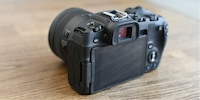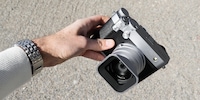

Canon PowerShot V1 review: a capable compact camera
Canon’s new model series is a breath of fresh air in the small vlogging camera market. The PowerShot V1 gets a lot right.
In the noughties, Canon’s G series was the spearhead of compact cameras with its one-inch sensors, high aperture and superior controls. Then came the smartphone, the market imploded and Canon pretty much handed over sole control of the market to Sony.
But now Canon has made a comeback with the PowerShot V1. The camera costs 879 francs and feels like the spiritual successor to the G series. As the name suggests, the camera’s use focus is different from its predecessor’s, with «V» standing for «video». And it’s no wonder; the vlogger target group is growing and growing. But even if you’re after a compact camera, the V1 is worth a gander.
Wieldy, but unfortunately no viewfinder
For such a small camera, the V1 is easy to hold thanks to the grip on the front and the thumb pad on the back. The controls feel good too, though the small thumb wheel is a tad fiddly. I also wish there was a dedicated button to set the ISO sensitivity. I can adjust it using the quick control, but it takes several clicks.
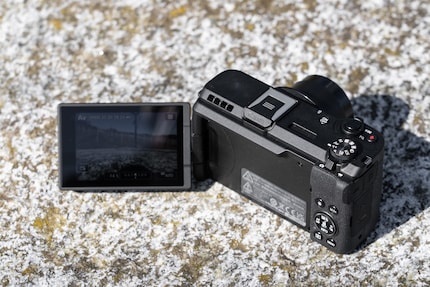
I like that there’s a classic mode wheel on top, a switch for photo and video mode and a separate record button. An LED at the top flashes to let you know video recording is in progress. The V1 has an active cooling system to prevent overheating during long takes. The built-in optical ND filter is also useful for filming, allowing me to generally achieve a shutter speed in daylight that makes movements look natural (180-degree rule).
The biggest weakness of the small Canon camera is the lack of a viewfinder and the mediocre display that’s somewhat hard to read in the sun. It’s darker and smaller than a modern smartphone display. As a result, I find taking photos and filming in good weather less fun than with my iPhone 16 Pro.
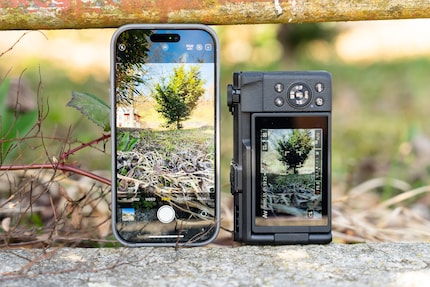
Large sensor, wide lens
Canon haws equipped the V1 with a 1.4-inch sensor. It has a crop factor of 2.0 – roughly the same area as Micro Four Thirds, but with a 3:2 ratio. This is very good for a compact camera and has a positive effect on the dynamic range and noise.

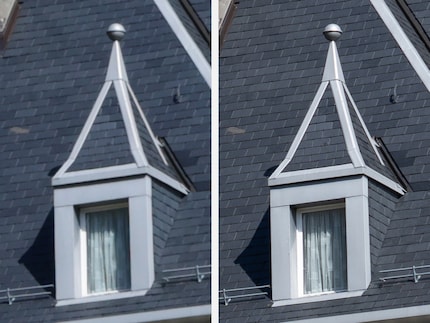
The V1 has a modest resolution of 22 megapixels. Given the camera’s focus on video, this makes sense, as it allows the sensor to be read out quickly enough. The sensor is likely based on that of the Canon EOS R7; the individual pixels are the same size. The V1 delivers videos in 4K with up to 30 frames per second (fps) from the full sensor (5.7K oversampling). Higher frame rates (up to 60 fps) necessitate a 1.4x crop.
The lens has a focal length of 16–50 mm (full-frame equivalent) at ƒ/2.8–4.5. The ultra-wide-angle perspective is ideal if you want to film yourself. At the long end, the 50 millimetres is a solid normal focal length, though I’d appreciate a bit extra for photography. The same goes for the aperture – don’t expect a strong bokeh effect. These are the expected trade-offs of the compact size and large zoom range.
I can only judge the image quality of the Canon PowerShot V1 to a limited extent, as I couldn’t open the RAW files yet at the time of my test. The JPGs make a good impression, though. Don’t expect a full-frame level detail, but you do get more than with a smartphone. The V1’s larger sensor in particular produces usable results even at high ISO, whereas photos from my iPhone 16 Pro look lousy.

Three-stage image stabiliser, great autofocus
A good image stabiliser is essential for filming yourself. The Canon V1 stabilises the image optically, and also gives you the option to stabilise it digitally. The latter offers two levels. Level 1 crops the video only slightly – if I zoom out completely, I still fit in the frame. With level 2, it becomes difficult and I have to hold the camera with a totally outstretched arm.
The optical stabilisation alone is enough for photos or videos I take when standing still. In the case of vlogging, however, the image is pretty shaky. In this case, I’ve found level 2 of the digital stabilisation to be the sweet spot. It results in a much more stable video with less wobble in the corners. Level 2 provides additional stability, but crops the image too much.
When it comes to autofocus, I have only positive things to say. It detects faces, eyes and various objects quickly, decisively and reliably. Canon has caught up with industry leader Sony in recent years and has also equipped the V1 with its good dual-pixel system. I have nothing bad to say about it.
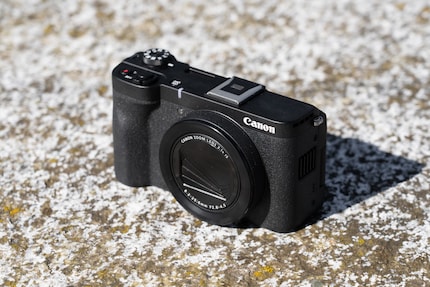
In a nutshell
A very good camera to have on hand
The Canon PowerShot V1 focuses on the things that make a good compact camera: a large sensor, well thought-out ergonomics and the right features. The latter include reliable autofocus, a built-in ND filter and a combination of optical and digital image stabilisation.
As a camera to always have on hand for vlogging, the V1 does everything right. It fits into the pocket of your jacket and offers significantly better video quality than a smartphone, especially in suboptimal lighting conditions. The lens with its zoom range of 16–50 mm is versatile, though not particularly fast, and it would be nice to have a viewfinder or a brighter display for taking photos. Otherwise, the V1 feels like a modern version of the Canon G series.
The bottom line is that Canon is breathing new life into the segment between smartphones and system cameras. The Canon PowerShot V1 finally puts the pressure back on the competition, trumping the Sony ZV-1 II, which has a smaller sensor and no optical image stabilisation. The only downer might be the price. If you’re willing to spend a little more, you could get the Sony ZV-E10 II or the new Canon R50V instead. However, they’re larger and not quite as suitable for vlogging with their kit lenses.
Pro
- Good image quality
- Reliable autofocus
- Wieldy
- Optical image stabilisation
- Versatile lens
- Built-in ND filter
Contra
- Somewhat pricey
- No viewfinder
- Mediocre display

My fingerprint often changes so drastically that my MacBook doesn't recognise it anymore. The reason? If I'm not clinging to a monitor or camera, I'm probably clinging to a rockface by the tips of my fingers.
